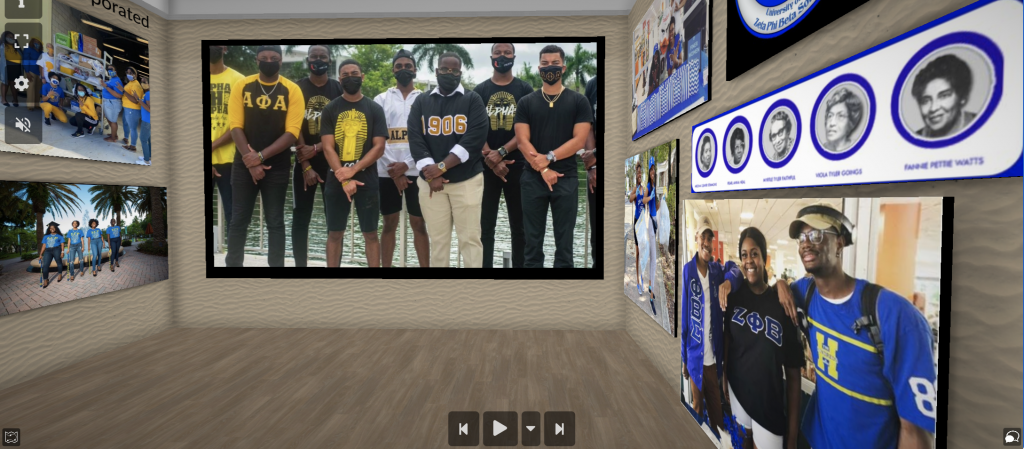Last Tuesday, Feb. 9, the University of Miami’s National Society of Black Engineers (NSBE) premiered the first Virtual UM Black History Museum. The interactive exhibit was curated by President Taylor Washington, a junior studying industrial engineering, and incorporates more than 150 photos and videos depicting the rich history of Black excellence at UM.
Washington’s love of museums started at an early age. Raised in Maryland, Washington frequently visited museums with her mother, a National Archives employee. While she acknowledged a lack of Black representation in these institutions, she said things changed with the opening of the National Museum of African American History and Culture in 2016.
“I saw people that looked like me all over the museum,” Washington said. “So, I knew I wanted to do something like that and create a space for Black people to show off their excellence.”

The virtual museum was created on Artsteps, a program that Washington was first introduced to while conducting research as an Adobe Scholar. The original layout of the museum contained one room dedicated to UTrailblazers, but it expanded as more organizations contributed.
“The museum that everyone is seeing today is probably my 20th design,” she admitted.
Upon entering, visitors are met with a timeline of UM’s Black history, starting from the 1960s and ending in 2002. The remaining rooms highlight Black student leaders and organizations that have and continue to pave the way for a more diverse campus.
“My reasoning for creating the Black History Museum is to educate students on past trailblazers and how their impact, or ‘good trouble’ they got into, blossomed into a more inclusive U for all students,” Washington said.

“I want students – African American and Black – to be able to see themselves. I want them to see the good that they’re doing on campus and understand that they are a valuable asset to the U.”
Although the museum focuses on Black leaders at UM, Washington asserts that anyone can and should learn and celebrate the expansive impact of Black culture at the university.
“I want them to understand our history…the things that the students have done in the past and students are doing today to make our campus more inclusive and welcoming to everyone that comes.”
Washington emphasized that the museum is simply one factor of a campus-wide effort to uplift Black leaders.
“I want this museum to be not a substitution for a Black space on campus, but a prototype of something on campus where other students can see Black excellence.”
Additionally, Washington wants to highlight the involvement of the UTrailblazers and other Black student organizations, all of whom contributed photos, videos, and archives to the museum. A complete list of contributors can be found in the Collaborator Gardens, the virtual museum’s final guide point.
Don’t take our word for it. Click here to experience the University of Miami’s first Virtual Black History Museum.






